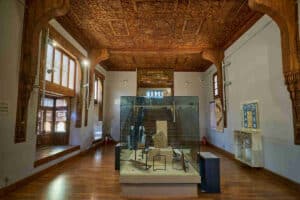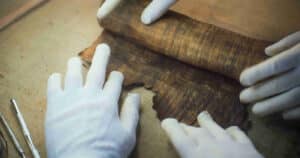As we have told in other posts of this blog, the obelisks of Egypt are authentic signs of identity. And so they are shown in the country itself, but also in Rome, capital of the empire that in antiquity exercised a powerful rule over this territory: some were promoted by the emperors themselves but others are earlier and were brought expressly to decorate the most emblematic places of the eternal city. In this post, instead, we talk about Egyptian obelisks that are in other different cities, which shows that they are still elements of prestige and pride around the world.
Obelisk on the Place de la Concorde, Paris
Probably the most famous Egyptian obelisk outside Egypt is the one in the Place de la Concorde in Paris. And, despite what many people believe, it is not there as a result of a plunder, but as a gift: it was Mehmet Ali, the Egyptian prince during the Ottoman domination, who decided to give it to France in 1830 as a sign of concord, as part of a strategy to strengthen ties with the major European powers. Moreover, 8 years earlier, a Frenchman, Jean-François Champollion, had made one of the greatest discoveries related to Egyptian culture: the decipherment of hieroglyphics.
Champollion himself participated in the choice of the most appropriate obelisk for this place: it is, no more and no less, one of the two that flanked the entrance to the temple of Luxor (ancient Thebes), from the time of Pharaoh Ramses II. And undoubtedly, one of the great attractions are precisely its splendid hieroglyphs. In addition, at the base of the monument, as a pedestal, another monolith was added with a scheme of how it was disassembled and transported to get here. 15 years later, in 1845, King Louis Philippe I of Paris gave Egypt a copper clock to be installed in the citadel of Cairo… although it never worked.
Obelisks of the Hippodrome, Istanbul
Istanbul, capital of the Ottoman Empire, is also pleased to have two large obelisks in its most important square: Sultanahmet, ancient hippodrome of Constantinople (ancient name of the city, when it was in turn capital of the Eastern Roman Empire and, later, of the Byzantine Empire). One of them is from the time of Thutmosis III in Luxor and brought here by Theodosius, a Hispanic who ruled the empire from this city. On the other hand, the other is known as the Obelisk of Constantine and is very different: it is not made of a single stone (as was the case in ancient Egypt) but based on numerous blocks that were covered with bronze plates. Moreover, its construction is much later: by the Byzantine Emperor Constantine VII, in the tenth century, so it is not an Egyptian obelisk as such.
Cleopatra’s Needles in London and New York
We close this review of Egyptian obelisks outside the country with two that form a pair but are currently very distant from each other: they are the Needles of Cleopatra and are in London and New York, respectively. They were also made in the time of Thutmose III (15th century BC) for the city of Heliopolis and, despite their name, have no direct connection with Cleopatra. However, they were taken to Alexandria, the capital at the time of that queen-pharaoh, by her rival and victor, the Roman emperor Augustus.
Instead, they are now in these other two cities since the nineteenth century, again as a diplomatic maneuver by Egyptian governors. In the case of the London obelisk, which is in Westminster, it was Mehmet Ali who promoted this gift in 1819 to commemorate the British victories against Napoleon in the Napoleonic Wars. However, due to different economic vicissitudes, it did not reach this location until 1877.
The New York Cleopatra’s Needle is located in Central Park and was a commercial maneuver of Ismail Pasha to strengthen commercial relations with the North American country, just after the opening of the Suez Canal in 1869. It was installed in 1881.




